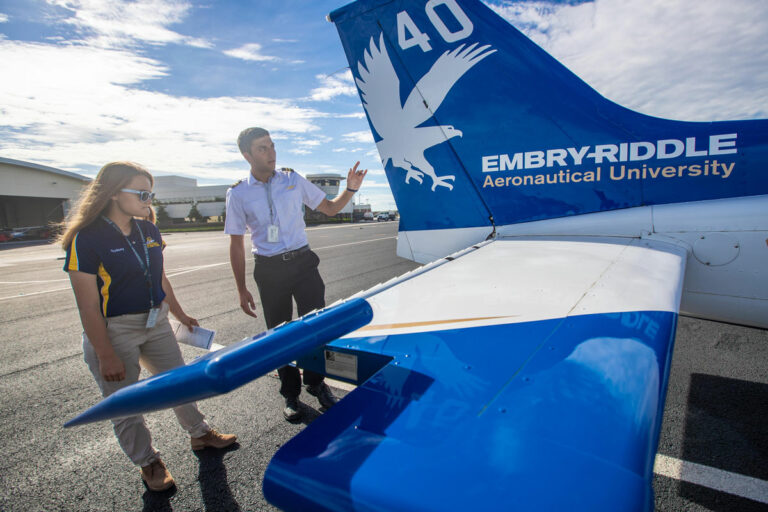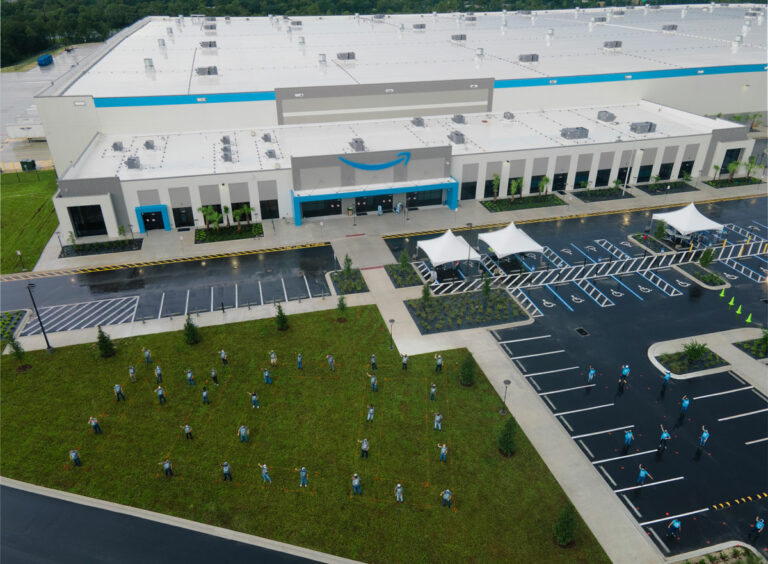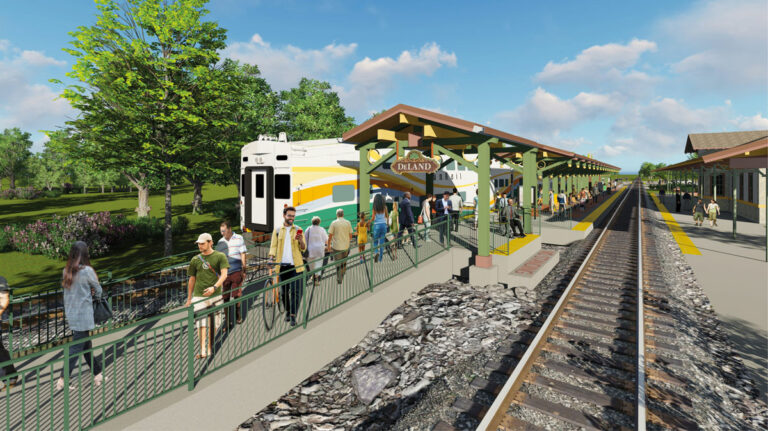Ambitious Expansion Plans Set to Elevate Daytona Airport’s Appeal

Volusia County is home to beautiful beaches, expansive rivers, and several attractions. Tourism in the area is increasing, with many choosing to fly into the Daytona Beach International Airport (DAB). The airport serves as the “Gateway to Central Florida,” linking travelers to the Daytona International Speedway and beautiful Atlantic Ocean as well as the Kennedy Space Center and Orlando attractions. Cyrus Callum, Director of Aviation and Economic Resources at DAB, answers questions about the airport’s future expansion plans and the critical service it provides to the area.
1. Please provide us with an overview of Daytona Beach International Airport’s long-term growth strategy. How does the airport plan to continue to position itself as a competitive regional aviation hub?
The Daytona Beach International Airport (DAB) aims to be the premier air transportation option in the region, but also do that with exemplary customer service without regard to our size. We have been known as a “boutique” airport that has focused on providing our travelers with an “airline-club” experience. This includes short, efficient and convenient TSA wait times, regardless of if the passenger is enrolled in TSA PreCheck (which is a Registered Traveler program offered to help expedite the screening process). Until recently, DAB has been served by two legacy air carriers, American Airlines and Delta. We are extremely grateful for the years of partnership we’ve had with them.
However, a common concern shared by many who use DAB is high airfares and limited nonstop destinations. As a result, we have been aggressively pursuing additional air carriers to provide more destinations and competitive airfares for our customers. This strategy will help with reducing passenger leakage to larger markets, such as Orlando and Jacksonville. We successfully launched DAB’s first ultra-low-cost carrier, Avelo Airlines in June with twice weekly service to New Haven, Connecticut (Tri-State Area), and Wilmington, Delaware (Greater Philadelphia) to help add some parity to the market. We are also in discussions with our legacy carriers about adding destinations to complement the markets they already serve at DAB. American has added seasonal service to Philadelphia, Washington Reagan National and Dallas-Fort Worth and has provided mainline service to Charlotte throughout the past year. Delta has provided consistent service to Atlanta and special event service to Detroit.

We are also developing a strategy to attract international air carrier service to capitalize on our Canadian tourism opportunities, as well as investigating some European markets with the development of a new Federal Inspection Service facility located at the end of the concourse in the main passenger terminal. While planning is within its preliminary stages, U.S. Customs and Border Protection activities would be conducted within the terminal and connected via two additional swing gates at the end of the concourse to allow for a more efficient passenger processing experience. This would allow for the repurposing of the existing Customs facility and would potentially allow for the development of a more robust terminal expansion program as passenger demand continues to increase.
However, attracting more air service options involves lowering airline operating costs. We have a number of aeronautical and non-aeronautical development projects to help diversify revenue opportunities for the airport to lessen the reliance on the airlines to recover operating costs. This involves making as much shovel-ready land on airport property available for a variety of potential uses, including new hangar and maintenance facilities, industrial facilities, air cargo facilities and commercial retail facilities. The Airport is fortunate to be within the same Volusia County department with the Economic Development division, which can assist with marketing these properties as they become ready for vertical development. Being near the intersection of Interstate 4 and Interstate 95 is a significant advantage toward enticing a variety of developmental opportunities on and adjacent to DAB. We want to be proactive and present a suitable environment that will be of mutual benefit for years to come.

2. In recent years, there has been a surge in passenger traffic at DAB. What measures has the Airport taken to accommodate this increased demand, and what plans are in place to ensure a seamless and enjoyable passenger experience in the future?
Through the pandemic, we focused on making passengers feel as comfortable as possible by providing amenities, such as care kits that helped with providing peace of mind. Concurrently, we completed a $14 million terminal renovation that includes all the conveniences found in larger airports without the long lines and confusion of larger airports. As a part of the terminal renovation, a business center open to the traveling public is available between Gates 4 and 6 in the concourse. A collaborative partnership with the Volusia County Library System has allowed for the inception of the “Books on the Fly” program, which allows travelers to take actual books, free of charge. The program also allows for free downloadable books, movies and magazines through this partnership. For customers traveling with families, we offer a private mother’s room with comfortable amenities. A service animal relief area is available for those who are traveling with service animals.
We have an extremely positive and productive relationship with our partners from the Transportation Security Administration (TSA), who share our customer service values. This allows uniformity in delivering a positive passenger experience throughout the passenger screening process. Our TSA screening facilities offer the latest in screening technology, providing our travelers with some of the safest, efficient and secure experiences in the industry. Currently, we boast of an average TSA checkpoint wait time of less than 10 minutes; however, as passenger traffic continues to increase, we are proactively working with our local TSA leaders to ensure minimal disruptions to our wait time expectations. For the convenience of our airline partners, we have instituted common-use facilities that allow airlines more flexibility to “plug and play” with their proprietary software, which is a desired air service recruitment benefit. While I mentioned our terminal expansion plans in the previous question, we are also studying the feasibility of constructing a parking garage to allow for covered parking and increased parking capacity and potentially consolidating our rental car facilities within the garage for greater customer convenience. As a result of our customer service philosophy and our proactive, forward-thinking team at DAB, we were grateful to have been recognized as the Commercial Service Airport of the Year in 2021, awarded by the Florida Department of Transportation. This award is normally dominated by some of the larger, busier airports in the state. However, at DAB, we excel at providing our customers with exemplary customer service. It is great for the team to be recognized for its effort.

3. Volusia County has been actively fostering a business-friendly environment to attract new companies and encourage economic growth. How does the airport contribute to these efforts, and what role does it play in attracting new businesses to the region?
The Daytona Beach International Airport has proven to be a catalyst for economic growth within Volusia County and beyond. The Florida Department of Transportation recently completed an economic impact study that indicates that the Airport generates between $3.1 and $3.2 million in economic impact annually for the region. We benefit greatly from the Daytona International Speedway on the west side of the airport and Embry-Riddle Aeronautical University on the east side of the airport. With the flight training of Embry-Riddle and other flight schools at DAB, the airport is often the third busiest airport in the state based on aircraft arrival and departure activity.
Historically, the County’s economic activity has been focused on the tourism industry, but we aim to be so much more. DAB’s proximity to the intersection of Interstate 4 and Interstate 95 can ultimately serve as a logistic hub for businesses that focus on manufactured goods and distribution. One major benefit DAB presents is available land adjacent to and on airport property. In 2021, the Airport/Volusia County was the recipient of a $4,000,000 grant from the U.S. Economic Development Administration to create shovel-ready land for business recruitment purposes. The Airport is breaking ground on these infrastructure improvements imminently. Concurrently, the Airport and the Volusia County Public Works Department have collaborated on the removal of some 30,000 cubic tons of debris left over from the former Daytona Beach landfill. This project will allow for the development of nearly 40 acres of land that can be used for a variety of aeronautical uses and generate hundreds of high-paying jobs at the Airport. The construction of Amazon’s robotics facility southwest of DAB has allowed for access and potential development for several airport-owned parcels south of the Airport. The more we can proactively invest in making land on and adjacent to the airport shovel ready for development, the better we can position ourselves to better compete for business recruitment opportunities in Central Florida, creating more jobs for our residents and a more diverse tax base.

4. What can the business community do to support the Airport’s growth?
Simple! Use the airport!
Customers often share that airfares are higher traveling in and out of DAB; however, they don’t consider the intangible costs of traveling out of Orlando, Sanford or Jacksonville. The customer needs to consider the cost and time of the drive to these markets, as well as parking challenges once they arrive at those airports. Another concern expressed to staff is the number of flights that require connections. In theory, the customer driving an hour-plus to another airport is already making their first connection, but many don’t take this into consideration. The airlines react to demand; therefore, when a potential customer books a flight out of Orlando, there is no incentive for that airline to add capacity to Daytona Beach. If we, as a community, are more conscious about booking out of DAB, the airlines will realize the opportunity to strengthen revenues and will add capacity. Further, new air service opportunities will develop, ultimately creating more competitive airfares. This is essentially the goal with the addition of Avelo and other air carrier service opportunities.
Due to the financial volatility of the commercial airline industry, airlines are often hesitant about opening new markets without some level of financial risk mitigation provided by the airport and the community in smaller markets. The Federal Aviation Administration (FAA) restricts grant-funded airports in how they mitigate start-up costs for new airlines. These start-up incentives must be fair and equitable and must expire within a set time period. Examples include airports waiving terminal rentals and landing fees and marketing new destinations for up to a two-year period. However, in order to ensure air service opportunities, airlines look to the potential users of the new service (i.e., the business community, local area chambers of commerce, convention/visitors bureaus and economic development entities) to help support the service through negotiated minimum revenue guarantees, travel banks or costs for other services restricted by the FAA for the airport to accommodate. Successful airline recruiting communities are those who are able to create programs and partnerships between the business community and their travel/economic development interests to support air service start-up costs. These communities typically reap benefits over the long term if the air service is sustainable.

5. Sustainable aviation practices and environmental consciousness have become increasingly important for airports worldwide. What steps has Daytona Beach International Airport taken to reduce its carbon footprint and embrace sustainable initiatives? Are there any future plans in place to further enhance the airport’s environmental sustainability?
It is very important that DAB continues to remain good stewards to the community. This includes employing environmentally sustainable practices to ensure the viability of our surroundings. On the airfield, the Airport has been awarded a grant from the FAA to install LED lights along the edge of the primary runway, which will not only reduce the draw on the local electrical power grid but will also reduce significant utility costs. We will also be installing LED lighting in the parking areas outside of the terminal. We are exploring how to integrate solar technology into our parking facilities. The award-winning Aircraft Rescue and Fire Fighting facility completed prior to the pandemic earned Leadership in Energy and Environmental Design, (LEED) Silver status, as well as three Green Globes. All future terminal expansion plans will consider the latest in sustainability practices.

6. As technology continues to evolve, the aviation industry is experiencing rapid advancements in areas such as artificial intelligence, automation, and passenger experience. How is DAB leveraging these emerging technologies to enhance operational efficiency and provide a world-class experience for travelers?
Emerging technologies in the aviation industry are extremely dynamic. With the recently completed terminal renovations, we have been able to take advantage of a variety of technological advances enjoyed at larger airports. One of the first things that are noticed when a customer enters the terminal are the amazing video walls behind the airline ticket counters. The airport doesn’t just provide airline proprietary information but also advertisements for events and some of our community partners. Wi-Fi in the terminal is free, along with the partnership with the Library System to download movies and digital books. Common-use terminal equipment provides for ease of connectivity for the airlines to process passengers checking in more effectively and efficiently. And as mentioned, the TSA has implemented the latest in passenger screening and baggage screening technology to help expedite processing times without impacting our customer experience goals. The verdict is still out on how artificial intelligence and Advanced Air Mobility (AAM) will impact the industry. There are a great deal of new technologies being evaluated by the FAA to determine how they will integrate into the airspace around airports.










